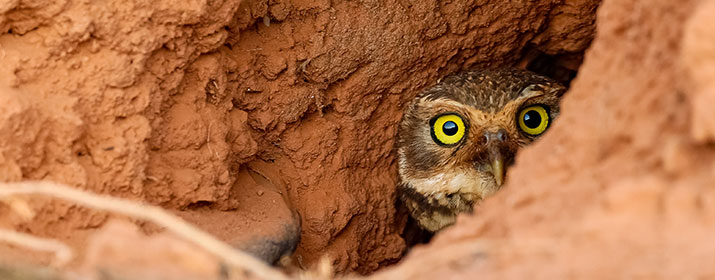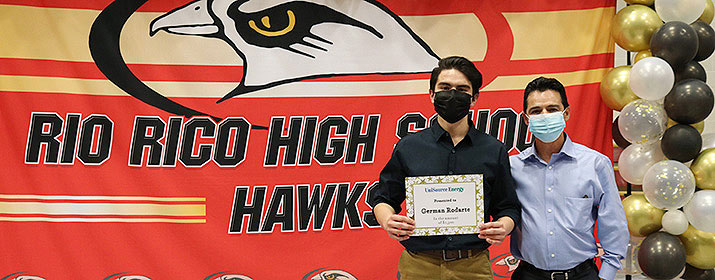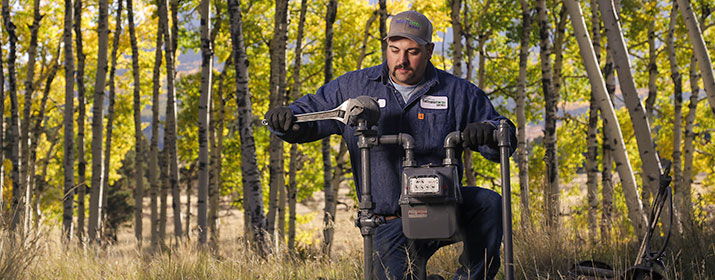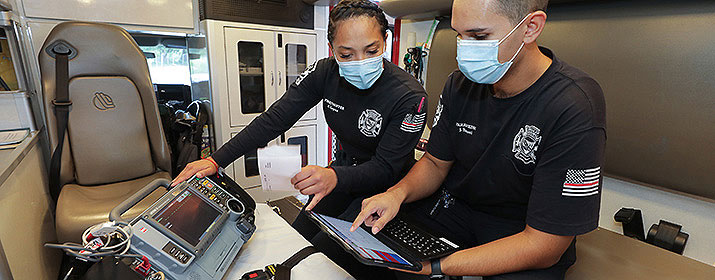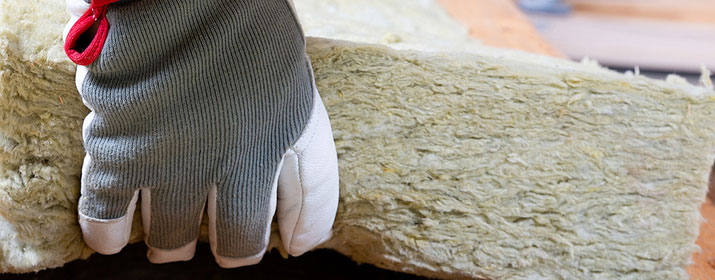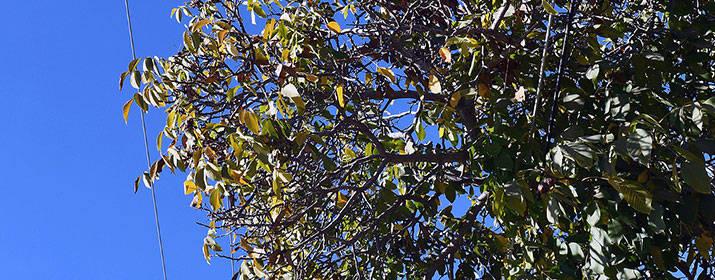
Driving sustainability is one of our corporate values, and it commits us to being good stewards of all natural resources, including trees and other vegetation. Here are five sustainable ways that UniSource Energy Services responsibly manages vegetation to protect the environment, maintain service reliability and help customers save energy and money.
1. Trimming Trees
UniSource works with Asplundh Tree Expert Company year-round to identify trees or other vegetation in danger of interfering with overhead equipment, potentially causing a power outage or creating a fire hazard.
Line clearance crews trim vegetation from public property and rights-of-way once every three years. More frequent pruning may be required in some circumstances. Crews also prune vegetation growing on private property away from overhead distribution lines once every three years at no cost to the property owner. A property owner may be billed if tree trimming crews are required to return within three years for additional work.
“We’re not required to do this, but we do it to improve safety and reliability and customer service,” said Jim Bennett, UniSource Maintenance Planner. “Customers can help ensure reliability by keeping their trees more than 10 feet away from power lines and should never attempt to trim trees close to our lines.”
Bennett said crews trim tree limbs to the sustaining lateral line, where the branch meets the main trunk, or to a sustaining branch, which is healthiest for the tree and recommended by the U.S. Forest Service and arborists. “It may not always look the prettiest, but it’s best for the tree and prevents new branches from growing toward our power lines.”
2. Recycling Green Waste
Rather than disposing of tree trimmings in the landfill, some of it is donated to two nonprofit groups in our service territory that put the mulch to good use.
Several years ago, volunteers at the Dig It Kingman community garden in Mohave County and the Sunflower Camp in Santa Cruz County saw Asplundh crews trimming vegetation in the area and asked if they could take some of the green waste.
“It’s already shredded and chipped, but it’s green, so we wait for it to decompose before we use it,” said Mike Roundy, Kingman resident who volunteers as the garden manager. “We use it as ground cover to mitigate weeds and hold in moisture so the water doesn’t evaporate so quickly. We also use the mulch at the bottom of our raised beds to add nutrients to the soil.”
Dig It offers residents a small raised garden bed or ground plot for a nominal annual fee and provides gardeners with seeds, education and information about gardening and growing food organically. Excess produce from the harvest is donated to local missions and food banks or given away to residents. Almost 1,000 pounds of food was donated last year.
Roundy estimates they receive more than 40 yards of mulch a year with drop-offs every few weeks.
Sunflower Camp near Tubac also uses our tree trimmings for dust control and mulch around trees. Situated in a unique natural setting close to the Anza Trail along the Santa Cruz River, the campground offers 26 spacious campsites for tents and RVs, groomed walking trails, stargazing and hiking.
“We bladed our road to make it smooth, but it was just so dusty,” said Owner Jennifer Tougas. “We thought we could spread the grindings on the road and it’s working. We’ve reduced the dust by 80 percent.”
Tougas said using the mulch around their rose bushes also has reduced watering from several times a week to just once. “The mulch keeps the roots cool, helps retain moisture and reduces our water usage, which is so important in the desert.”
Besides recycling green waste, Tougas said Sunflower is committed to other sustainable measures that include recycling waste and installing solar at the campground.
3. Preserving Native Plants
Whenever UniSource must build new power lines or substations in potentially sensitive environmental areas, we do everything we can to mitigate our impact on the local ecosystem, according to UniSource’s Leslie Carpenter, Senior Environmental & Land Use Planner.
“Arizona has a unique set of native plant laws to protect our state’s natural beauty,” she said, “so we’re committed to avoiding native trees and plants or moving them out of rights-of-way when it’s feasible and replanting them elsewhere to keep the natural environment intact. That’s just how we do business and it’s the right thing to do.”
Recently, UniSource assisted with the relocation of 21 Joshua trees from a future substation site north of Kingman in Mohave County to support the growing energy needs of the Meadview community. Joshua trees have lifespans of up to 200 years and are mostly found in the high desert forests of the Mohave Desert.
Although UniSource was not required by federal or state law to preserve the trees, our Land Resources team reached out to Friends of Arizona Joshua Tree Forest for help with relocating the Joshua trees from our future substation site and as part of a related road realignment project. Crews relocated the trees two miles south to an abandoned dirt road to help repopulate the area with Joshua trees.
“That whole area has the densest stand of Joshua trees anywhere,” said Carpenter. “The Bureau of Land Management wanted to relocate the salvaged trees to this new restoration area.”
This respectful approach to the environment helps us leave a light footprint. “The more we can keep natural landscape intact, the better it’s protected against wildfire and invasive plants. An intact environment is better suited to guard against potentially harmful influences,” Carpenter noted.
4. Preventing Wildfires
Twice a year, UniSource’s Kasy Schug spends four days in a helicopter visually inspecting all 1,500 miles of our transmission lines that span from Farmington, NM to Glendale, Ariz.
Schug, a Transmission Vegetation Project Manager, is looking for vegetation encroaching on our transmission lines, which carry extremely high-voltage electricity over long distances to communities. Vegetation that begins to interfere with our lines will need to be cut back.
“Having a consistent inspection process allows us to monitor heavily vegetated areas and follow-up with ground patrol,” Schug said. “Watching vegetation growth patterns in our rights-of-way is important because we want to maintain 300-ft. of clearance with our transmission lines.”
These aerial inspections are just part of UniSource’s year-round efforts to manage vegetation around our facilities to keep communities, our power lines and equipment, and the environment safe from devastating wildfires.
5. Promoting Natural Shade
Since our Trees for You program began in 2008, UniSource has contributed to the planting of more than 7,000 trees. Desert-adapted shade trees are either sold at a discount or given to customers, neighborhoods and community groups throughout Mohave and Santa Cruz counties to create natural shade. This helps customers reduce energy usage by keeping structures cooler in the summer.
These trees will grow to create natural shade canopies that mitigate the heat island effect. They also provide a habitat for wildlife while absorbing carbon dioxide, helping to mitigate climate change.
UniSource electric customers can purchase a qualifying tree from any area nursery or retailer to receive a $15 credit for up to two shade trees or four shade trees for homes built before 1980 or those with single pane windows. For more information about our trees program and how to receive a rebate, visit uesaz.com/trees-for-you.

